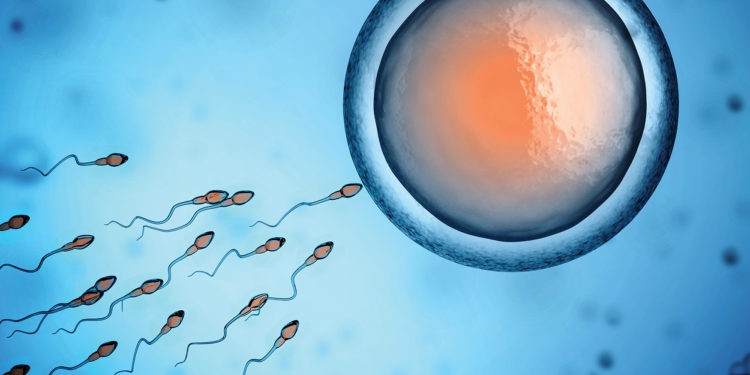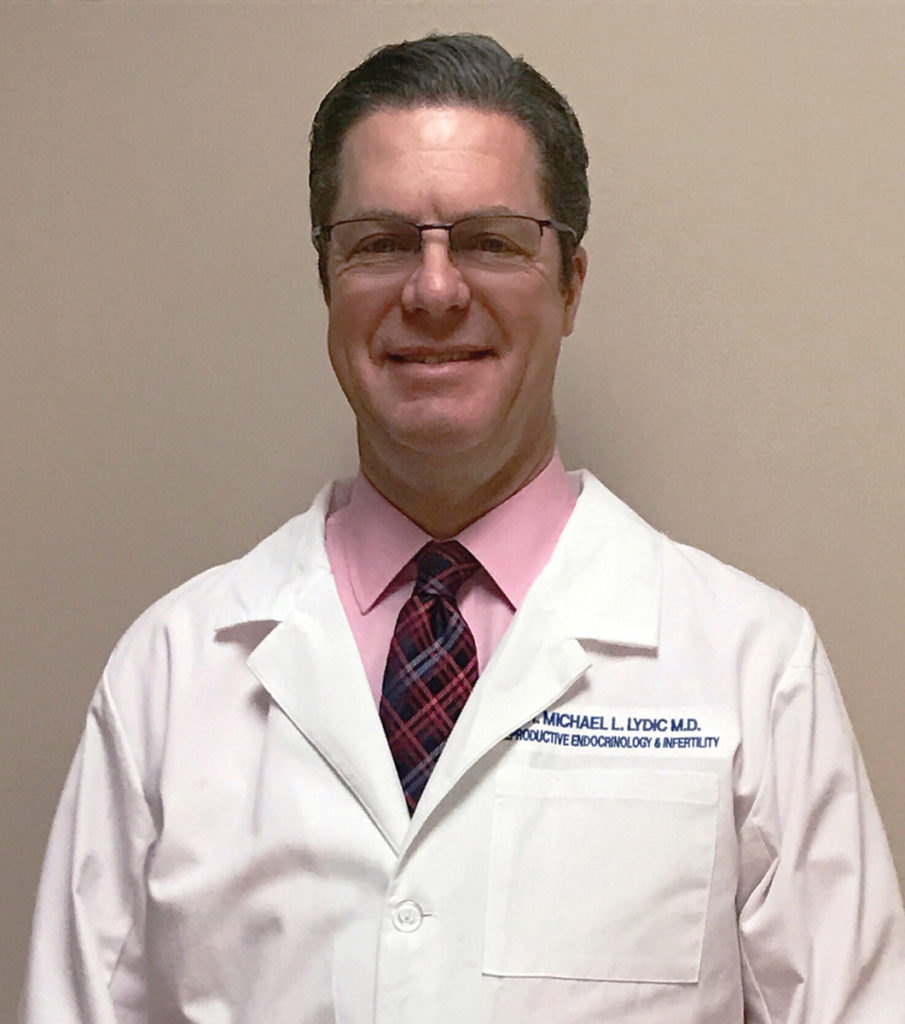Dreaming of Diapers

For some couples, having a baby is a fairly straightforward process and achieved without a problem. For others, this isn’t the case. About 7% of men (4.7 million) and 11% of women (6.7 million) of reproductive age in the United States experience fertility problems. The causes can be multiple and overlap such as failure to ovulate, structural problems in the reproductive system, infection, and implantation failure in women. Male fertility problems such as those that affect sperm formation and transport can also seriously impact the chances of getting pregnant. In some cases, the causes are unexplained.
In women, age is the most common overall cause of infertility. Growing numbers of women in the United States are waiting longer to have children and approach the quest to have children with a diminishing ovarian reserve, and ultimately experience difficulty in getting pregnant.
While the reasons may be many, and diverse, one thing remains common. Experiencing infertility is is hard, and heart-wrenching. It is life-disrupting, and often played out in public. Those experiencing infertility and in the pursuit of parenthood must do the impossible of making peace with the journey while going to battle with the enemy.

The Weapons of Infertility Warfare
Having the desire but inability to have children is one of the most difficult conditions in the medical community, often taking patients on an arduous and emotional journey toward parenthood. Patients today have every reason to feel encouraged, however. Because of medical advancements, patients are now being offered renewed hope through sophisticated and ground-breaking technologies.
Building on Past Achievements
Over 60 years ago, doctors achieved the first successful pregnancy using frozen sperm, and nearly 40 years ago, reproductive medicine reached another milestone with the first successful live birth of what was then called a “test tube” baby. Today, fertility experts continue to offer hope with dramatic improvements in treatments and technologies. Things that could only be imagined a short time ago are now realities, or near reality, helping patients achieve their dreams of conception.
Advances in Fertility Preservation
One of the most significant areas of fertility medicine seeing astounding advancement is fertility preservation. Fertility preservation methods are available to those who want to start a family sometime in the future but whose fertility may become compromised either by age, or medical treatments such as those used to treat cancer, or other medical conditions or their treatments.
“There are new drugs and drug protocols that allow us to harvest a woman’s eggs, no matter what part of the her menstrual cycle she is in. Eggs can also be frozen with great success. This has all had a significant impact on fertility preservation,” explains Michael L. Lydic, M.D., FACOG, of Kansas University Center of Advanced Reproductive Medicine and Board-Certified specialist in Reproductive Endocrinology and Infertility. “Patients may come with some urgency and do not have time to wait for the most optimal time to harvest eggs. Now steps can be taken to retrieve and preserve those eggs on short notice.”
New drugs, along with a prolonged life expectancy and overall increased cancer survival rates, also make it possible to offer prepubertal children undergoing cancer treatments options in preserving fertility as part of their comprehensive care.
Another exciting area of development is that of genetic testing, according to Dr. Lydic. “Genetic testing has been around a long time, but advances within genetic testing are having a dramatic impact on how we approach this area of medicine.”
Lydic continues, “For example, we use it to determine the healthiest and most viable embryo that is most likely to result in pregnancy, and not a miscarriage. Identifying healthier embryos before implantation may cut the rate of miscarriage by as much as half. Before this, we relied heavily on what embryos looked healthy, which had a possibility of not actually being healthy.”
This resulted in a high failure rate, and the practice of placing multiple embryos into a patient in one cycle was used to compensate.
“Things have changed an awful lot over the years. Just to demonstrate how much it has changed, my wife and I went through IVF treatments 20 years ago. Six embryos were implanted, which resulted in twins. At that time, the rate for multiples was very high because there were fewer assurances that the embryos were able to implant. Today, just a short time later, there is no need to implant six embryos because we know there is a significantly increased probability of a resultant healthy pregnancy with a single embryo, because of our ability to screen for so many different issues,” he shared.
Research Continues
Research in the area of fertility continues and as so, continues to offer new insight, promise, and alternatives.
“There are many interesting things going on in reproductive endocrinology today, and some may impact a more narrow group specifically, but whose research may give us greater knowledge of infertility,” Dr. Lydic explained.
Many of the treatments are in the experimental stages, but offer an interesting look at what the future of fertility treatments may involve.
Three-Parent Embryos
In some instances, a woman may carry a genetic disease that can impact pregnancy. These women may be one step closer to having healthy children with a procedure that involves taking the embryonic material from three parents, combining parts of the egg from two women and the sperm from one man. This also holds promise for same-sex parents to have children who are biologically related to both parents.
Maturing Eggs
A new treatment known as in vitro maturation, or IVM, is an assistive reproductive technology that helps get immature eggs up to speed by maturing them using a hormone culture, and manually fertilizing them.
Building Sperm in a Lab
Researchers in China have created sperm-like mouse cells in a petri dish. The cells lack tails and cannot swim and so must be injected into eggs, but are otherwise viable. In the lab, they were able to fertilize the egg and produce offspring successfully. While clinical applications are a long way off, this research may play a huge role in the future treatment of male infertility.
Testing the Strength of Embryos by Squishing Them
In 2016, researchers at Stanford University announced that they had developed a technique to determine whether or not an embryo should be used in an in vitro fertilization procedure. The test includes squishing embryos to test their strength. The squishiness determines how well the embryos will undergo cell division and, theoretically, how likely they are to survive.
Womb Transplants
It sounds like something straight out of the future, but the future may be closer than we think. Recently, doctors in Sweden have done several successful uterus transplants with a handful of patients able to carry pregnancies to term in the donated womb. This shows promise for women who have uterine structural problems, were born without a uterus, or transgendered patients limited by current fertility treatments.
Time-Lapse Photography of the IVF Process
Using time-lapse photography, doctors can monitor the embryos in the lab to determine if they develop into blastocysts. This allows them to better select the embryos which are developing most normally for implantation.
The Journey Does Not Need to be Extreme
Some of the current studies and research venture into clearly more extreme measures of achieving parenthood and would not be for every patient, says Dr. Lydic.
“Some of the research is done to advance science and offers options and alternatives. Often times, there are ways to achieve the same goal without getting too extreme. For example, surrogacy is a choice for those, who for whatever reason, cannot carry a baby to term. It is a far less extreme and invasive option than say a womb transplant.”
Infertility can put patients in a place of vulnerability and can produce a desire to have a child at all costs.
“It is up to their doctor to help inform them and steer them to choices that are safe and responsible and with the strongest likelihood of a positive outcome. This too, includes such barriers as insurance coverage. This is one of the biggest reasons patients may choose to go right to IVF versus opting into surgery first, because if they have one shot at success, they want to choose the methods with the shortest path and highest likelihood of producing a pregnancy,” continues Dr. Lydic.
Simple Things
Infertility is complex, but there are things patients can do to preserve or protect their fertility. One of the most important is to take cervical health seriously. Infections in both men and women can cause infertility. Untreated infections such as gonorrhea and chlamydia in women can lead to pelvic inflammatory disease which can cause scarring that blocks the fallopian tubes. Untreated syphilis can lead to stillbirths. Chronic infections in the cervix can also reduce the amount or quality of cervical mucus, making getting pregnant difficult.
“I highly recommend that all women stay on top of their cervical health. Visit the doctor regularly and get regular exams and pap tests. I also recommend that teens get vaccinated against HPV, human papillomavirus, which is known to cause cervical cancer. Doing this not only protects your general health, but it can play an important role in protecting your fertility and stop a preventable cancer,” Dr. Lydic asserted.
Infertility immerses patients in an unpredictable and unimaginable journey. It is both difficult and transformative. It is a huge part of their story, but it is not the only part. While medicine can’t guarantee pregnancy, it writes more hope into every line of life’s story than ever before.
For more information, contact 913-588-BABY or visit kumc.edu/school-of-medicine/ob-gyn/reproductive-endocrinology-and-infertility/center-for-advanced-reproductive-medicine.html or visit americanpregnancy.org

Michael Lydic, M.D., FACOG
Associate Professor Reproductive Endocrinology Division Department of Obstetrics and Gynecology
KU Medical Center Center for Advanced Reproductive Medicine
10777 Nall Avenue, Suite 200, Overland Park, KS 66211 | 913-588-2229


